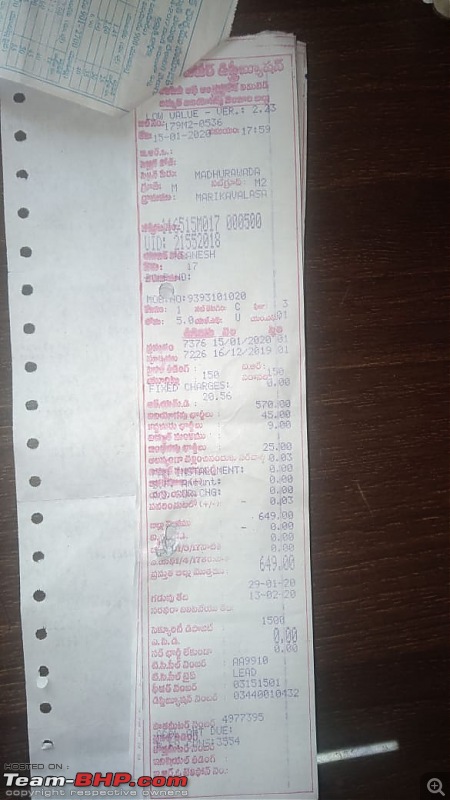| | #16 |
| Senior - BHPian Join Date: Feb 2010 Location: Pune
Posts: 1,050
Thanked: 393 Times
| |
| |  (2)
Thanks (2)
Thanks
|
| |
| | #17 |
| BHPian Join Date: May 2015 Location: Pune
Posts: 43
Thanked: 76 Times
| |
| |  (3)
Thanks (3)
Thanks
|
| | #18 |
| BHPian Join Date: Jan 2020 Location: Vadodara
Posts: 31
Thanked: 71 Times
| |
| |  (2)
Thanks (2)
Thanks
|
| | #19 |
| BANNED Join Date: Sep 2019 Location: Bengaluru
Posts: 586
Thanked: 2,405 Times
| |
| |  (6)
Thanks (6)
Thanks
|
| | #20 |
| BHPian Join Date: Jan 2020 Location: Delhi/RaeBareli
Posts: 40
Thanked: 306 Times
| |
| |  (3)
Thanks (3)
Thanks
|
| | #21 |
| Senior - BHPian Join Date: Jan 2006 Location: NYC/MAA
Posts: 1,430
Thanked: 603 Times
| |
| |  (1)
Thanks (1)
Thanks
|
| | #22 |
| BHPian | |
| |  (10)
Thanks (10)
Thanks
|
| | #23 |
| BHPian Join Date: Feb 2020 Location: Visakhapatnam
Posts: 35
Thanked: 159 Times
| |
| |  (3)
Thanks (3)
Thanks
|
| | #24 |
| Senior - BHPian Join Date: Jan 2006 Location: NYC/MAA
Posts: 1,430
Thanked: 603 Times
| |
| |  (1)
Thanks (1)
Thanks
|
| | #25 |
| BHPian Join Date: Feb 2020 Location: Visakhapatnam
Posts: 35
Thanked: 159 Times
| |
| |  (1)
Thanks (1)
Thanks
|
| | #26 |
| BHPian | |
| |  (9)
Thanks (9)
Thanks
|
| |
| | #27 |
| BHPian Join Date: Jan 2020 Location: Delhi/RaeBareli
Posts: 40
Thanked: 306 Times
| |
| |  (1)
Thanks (1)
Thanks
|
| | #28 |
| BHPian Join Date: Feb 2020 Location: Visakhapatnam
Posts: 35
Thanked: 159 Times
| |
| |  (2)
Thanks (2)
Thanks
|
| | #29 |
| BHPian Join Date: Jan 2020 Location: Delhi/RaeBareli
Posts: 40
Thanked: 306 Times
| |
| |
| | #30 |
| BHPian Join Date: Feb 2020 Location: Visakhapatnam
Posts: 35
Thanked: 159 Times
| |
| |
 |







 . The same person connects his phone with a 4000 mAh battery to the charger whenever it's not in use. And will again frown upon me whenever I connect mine by unplugging his phone. Now I know for a fact that there are many more like him.
. The same person connects his phone with a 4000 mAh battery to the charger whenever it's not in use. And will again frown upon me whenever I connect mine by unplugging his phone. Now I know for a fact that there are many more like him.

 .
.